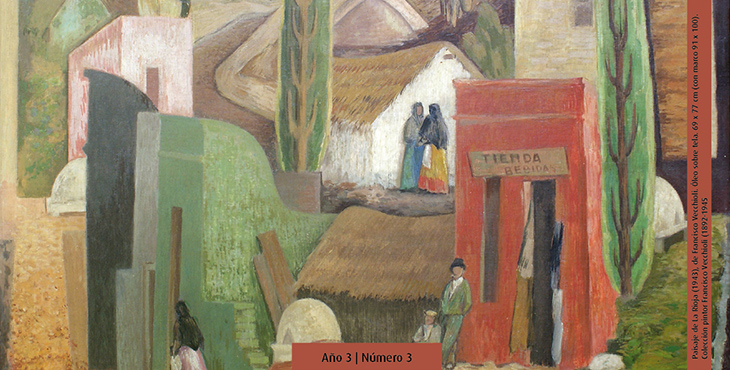Make (Other) History. Genealogy Building in the Work of Effy Beth
DOI:
https://doi.org/10.24215/25457888e014Keywords:
Genealogy, Queer, Feminisms, Cisnorm, EffyAbstract
In this paper we’ll analize a body of works by trans artist Elizabeth Mía Chorubczyk(1988-2014), also known as «Effy Beth», considering the relationships theyarticulate with art history and with institucionalized narratives of feminisms.Effy’s work constitutes a complex device of construction and accesss to thepast where,starting from references to feminist cis women artists, mainlyamerican and european, and the poetic-critical strategy of retaking themesand artistic procedures worked by them, the limits of these narratives arestressed, pointing out cisnormative power mechanics that operate regulatingand administrating the art history narrations.Downloads
References
Aumont, J. (1992). La imagen. Barcelona, España: Paidós.
Bernini, L. (2018). Las teorías queer. Una introducción. Barcelona, España: Egales.
Chorubczyk, E. (2011). Nunca Serás Mujer [Performance]. Recuperado de http://nuncaserasmujer.blogspot.com
Chorubczyk, E. (27 de septiembre de 2010). Una nueva artista necesita usar el baño [Entrada de blog]. Recuperado de http://tengoefymia.blogspot.com/2010/09/una-nueva-artista-necesita-usar el-bano.html
Gutierrez, M. L. (2008). Crítica a la estética androcéntrica. Arte y feminismo en la cultura contemporánea (Tesis de Licenciatura). Facultad de Ciencias de la Educación de la Universidad Nacional de Entre Ríos, Argentina.
Gutiérrez, M. L. (2015). Entre las intervenciones feministas y el arte de mujeres. Aportes, rupturas y derivas contemporáneas de los cruces entre arte y feminismos. Asparkia, (27), 65-78. Recuperado de http://www.e-revistes.uji.es/index.php/asparkia/article/view/1481/1737
Máximo, M. (2016). Que el mundo tiemble. Cuerpo y performance en la obra de Effy Beth. La Plata, Argentina: Edulp.
Downloads
Published
How to Cite
Issue
Section
License
Current policy since 2019
The acceptance of the manuscript by the magazine means the non-exclusive cession of the property rights of the authors in favour of the editor, who allows the reuse, after publication (post print), under a license Attribution-NonCommercial-ShareAlikes 4.0 International (BY-NC-SA 4.0).
According to these terms, the material can be copied and redistributed by any means or in any format as long as a) the author and original source of the publication are quoted (magazine and URL of the work), access to the license is provided and whether changes have been made is mentioned; and b) the material is not used for commercial purposes.
The cession of non-exclusive rights means that after the publication (post print) in Armiliar the authors can publish their work in any language, means and format; in such cases it must be mentioned that the material was originally published in this magazine. Such cession also means the authorization of the authors for the work to be collected by SEDICI, the institutional archive of the Universidad Nacional de La Plata, and to be spread in the databases that the editorial team considers appropriate to increase the visibility of the publication and its authors.
Moreover, the magazine encourages the authors to deposit their productions in other institutional and thematic archives under the principle that offering the society the scientific and academic production without any restrictions contributes to a greater exchange of the global knowledge.



























